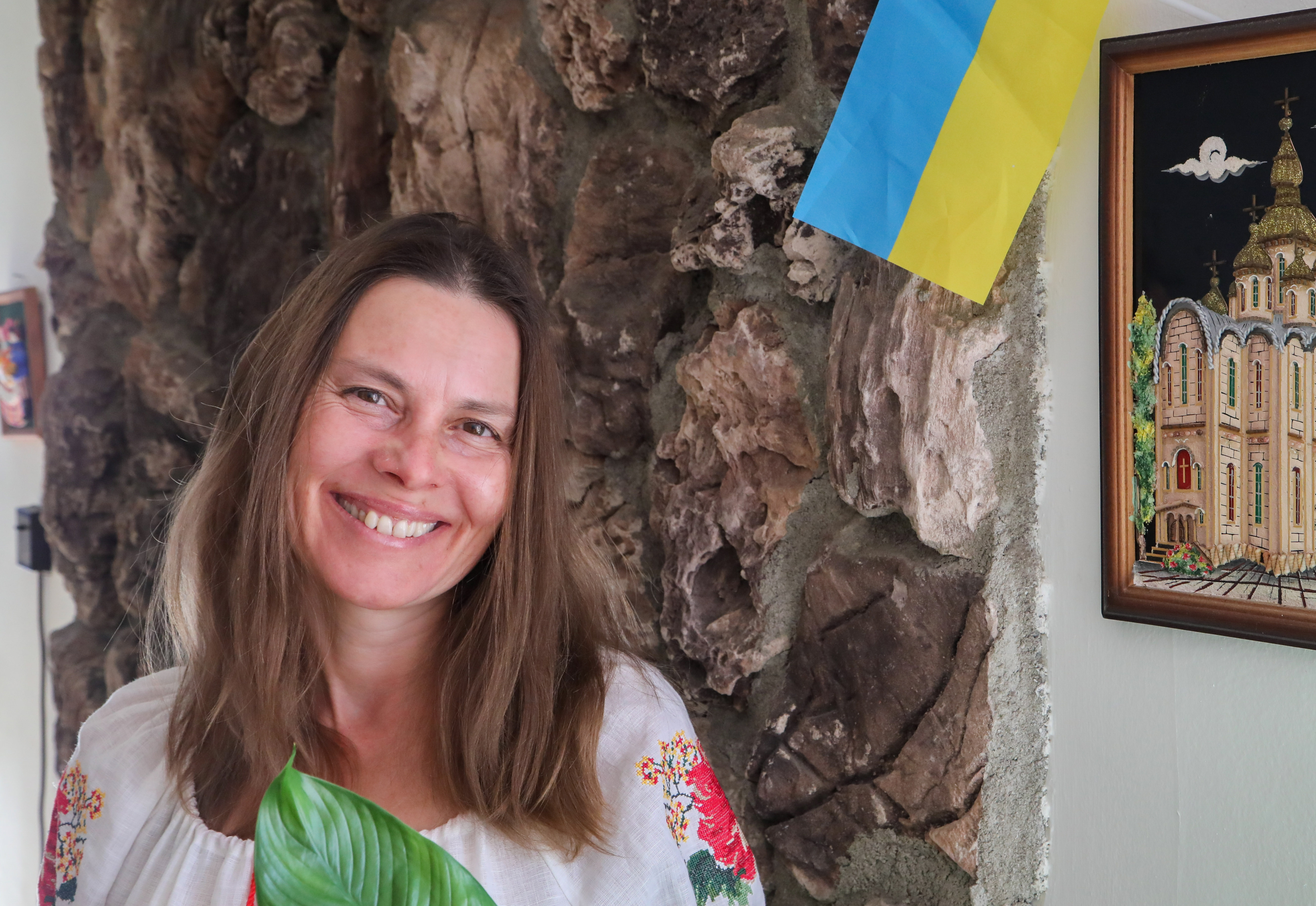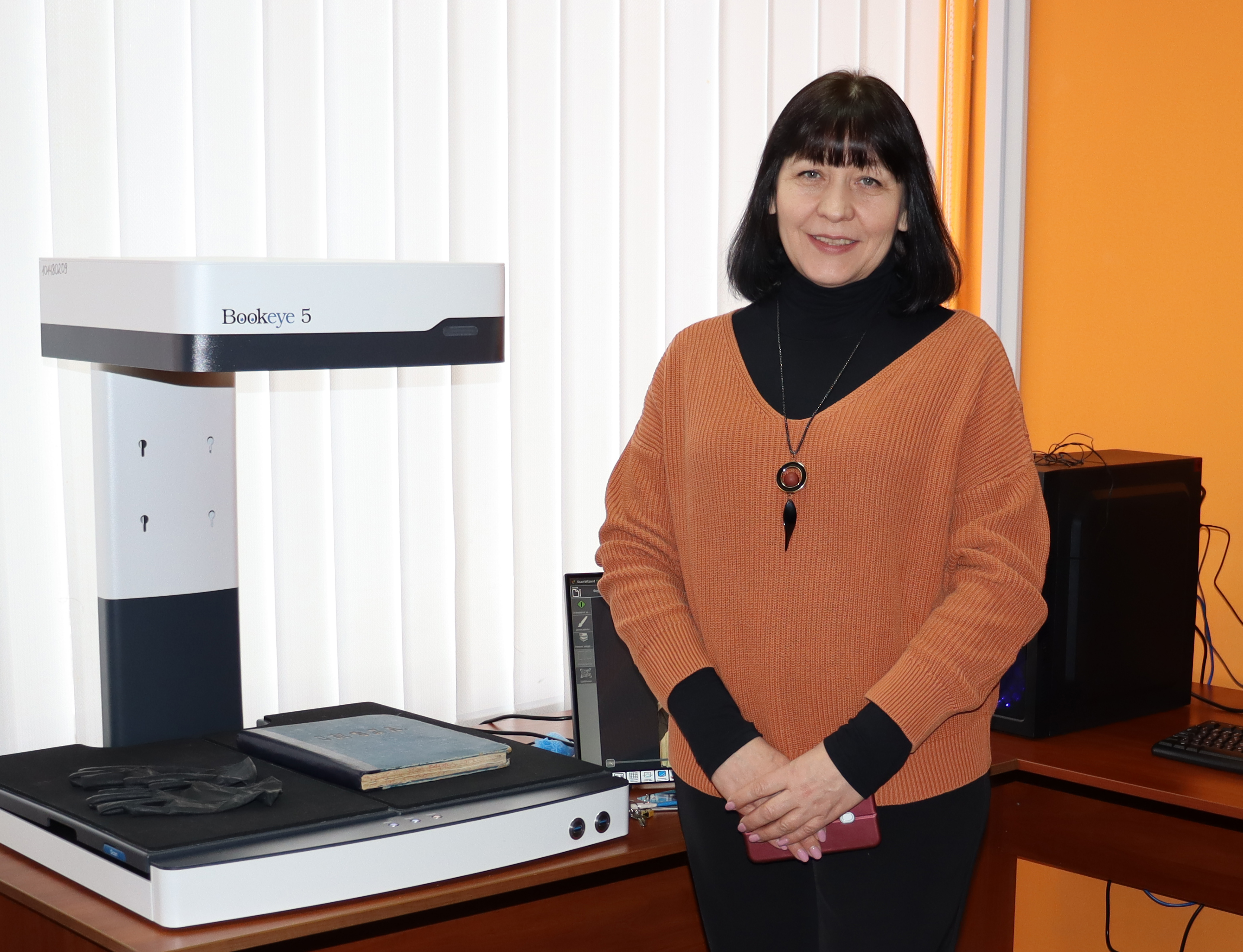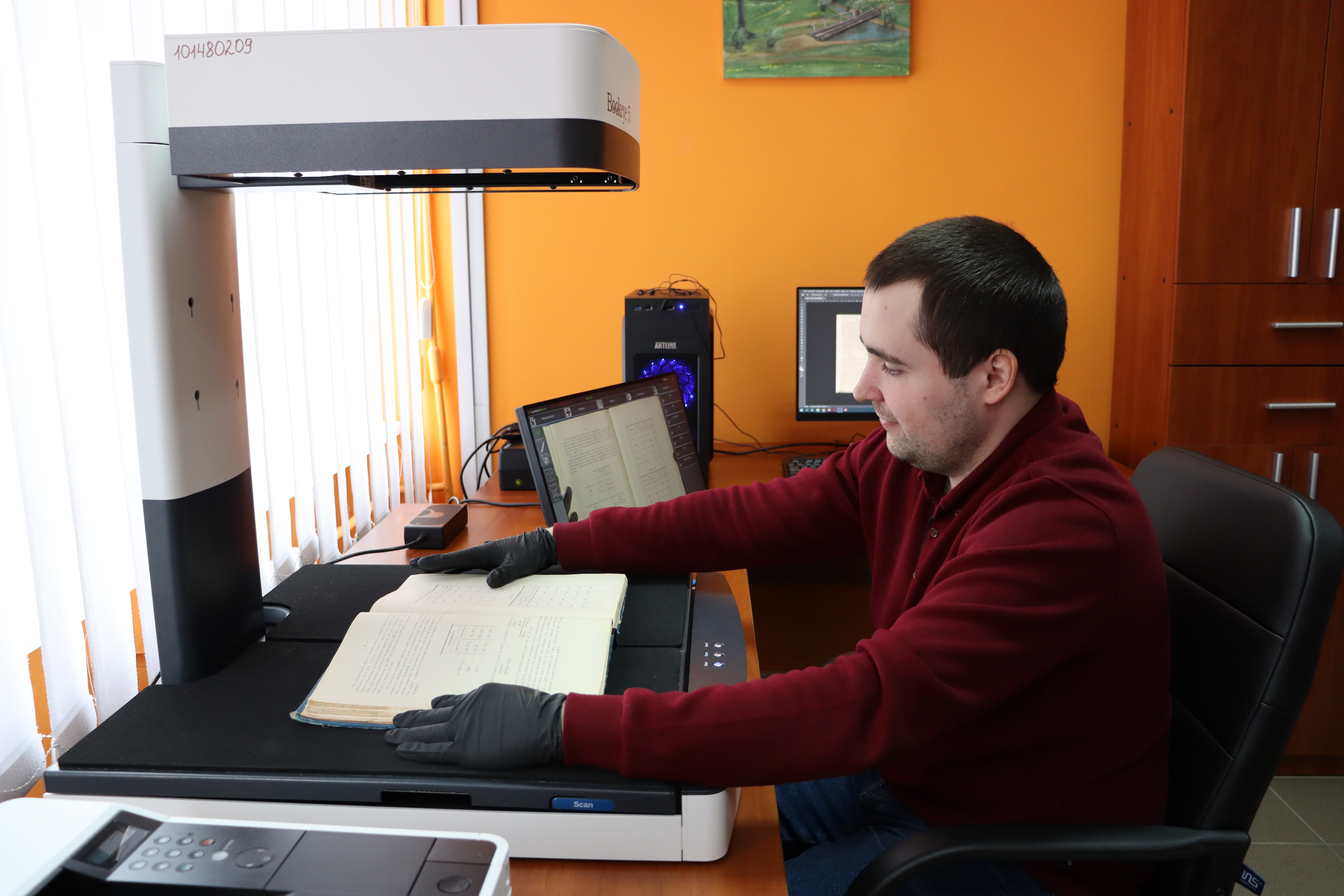
The night Russian bombs began falling, Dr. Ulia Gosart was 6,000 miles from her native Ukraine.
She had lived in the United States for three decades — but after the war began one year ago, one of the first calls she made was to her childhood library in the central Ukrainian city of Cherkasy.
“I felt like, if I don’t do anything, I cannot go on,” said Gosart, an assistant professor at San Jose State University’s School of Information. “I knew I could do something to benefit the library, the city and Ukraine in my own way.”

Gosart contacted her hometown library’s director, Luidmila Diadyk, to figure out what was most needed. The library had no digital copies of what it held in its stacks — even its 1860 edition of Kobzar, one of the last book of poems to be published while its famous author and library namesake, Taras Shevchenko, was still alive. As the war’s frontlines continued to expand, Gosart knew the library needed reinforcements. In 2022, she and San Jose State set up a fundraiser to purchase the equipment necessary for digitizing the library’s rare materials, which would be gone forever if the library were destroyed.
A few months later, Gosart’s efforts caught the attention of Saving Ukrainian Cultural Heritage Online (SUCHO), a volunteer-led group focused on preserving Ukraine’s culture. Together, the organizations purchased scanners, computers, and other technological equipment for the Taras Shevchenko Regional Library in Cherkasy.

“The past doesn’t take care of itself. It takes active, human intervention to ensure things stick around,” said Quinn Dombrowski, one of the founders of SUCHO and an academic technology specialist at Stanford University. “What we’re archiving now are the materials that will reflect a pivotal moment in Ukraine’s history.”
Before this month, that library had just two hours of electricity a day. Now, with support from librarians across the world, it is racing to digitize a 3,000-book collection of Ukrainian history.
“If a library is destroyed, all of those records, those documents, that history — it’s gone,” said Dr. Anthony Chow, the director of San Jose State’s School of Information. “What a loss to humankind.”
Cherkasy is a small, riverside city 100 miles south of Kyiv, with a population less than a third of San Jose’s. The city has remained relatively safe, but after a year of conflict, no region has been left unscathed. Air raids and electricity blackouts are a part of everyday life. Children have lost their fathers as they’ve gone to fight at the frontlines. And for Gosart, Dombrowski, and librarians across the world, something else is at stake, too: the history of Ukraine.

Throughout the year, both President Joe Biden and Ukrainian president Volodymyr Zelenskyy have accused Russia of attempting to erase Ukrainian culture, similar to efforts in the now-occupied peninsula of Crimea. In 2021, the United Nations Educational, Scientific and Cultural Organization (UNESCO) stated that Crimea’s cultural sites had suffered from “barbaric treatment and robbery” by Russia, who annexed the region in 2014. Now, many experts fear such history is repeating in mainland Ukraine.
Since last February, the Ukrainian government has verified the destruction of 155 libraries and the damage of 298 more. Other reports indicate the devastation could be much wider.
For Gosart, digitizing the Cherkasy library was one way to fight back.
San Jose State was only able to purchase a lower-end scanner with the $6,000 they were able to raise. But once SUCHO got involved, the organization expanded the university’s ambitions tenfold. With their financial support, Gosart coordinated deliveries of a second scanner — one that could attain fast, higher quality scans with a more professional resolution — five computers, three laptops, multiple printers, a digital camera, and more. The latest shipment, a power bank to keep the technology running during electricity blackouts, arrived on Feb. 10.

“(Vladimir) Putin has made statements that make it very clear he doesn’t see Ukraine as a distinctive country,” said Dombrowski. “Our goal was, and continues to be, to assert that it absolutely is, and that Ukraine has a culture that deserves to be protected.”
In 2022, SUCHO provided equipment to 34 libraries, museums and other institutions in Ukraine, coordinating with the Ministry of Culture to archive thousands of materials. They’ve also made a mission of preserving Ukrainian websites, backing up thousands of digital platforms on their own servers.
Another way the two librarians are trying to preserve the country’s historical record is by documenting what is happening today, Gosart said.
Around the time the first scanner was delivered to Cherkasy last fall, Gosart and Diadyk coordinated a drawing competition among children in the area — not only at the regional library but at the 40 other smaller libraries it oversees. Hundreds of children participated at their local libraries, where they painted, colored and drew their reflections on the war.
Eight-year-old Daria Tertyshna painted a scene of gray and blue, with a tank in the foreground and a crying eye on the horizon. Sixteen-year-old Nazar Shcherbatyuk drew two dozen people around a campfire: soldiers in fatigues alongside guardian angels, glowing white. Eight-year-old Nika Golovata painted a house on fire, with a young girl screaming — and clutching a stuffed bear — as it burns.
Each of the drawings was digitized with the library’s new scanner, and they are now housed electronically at both Taras Shevchenko and San Jose State.
“All 442 drawings will forever remain in history,” said Diadyk. “(They) will be seen throughout the world for decades to come.”
Now, Gosart is thinking of ways to bring those drawings to life and to ensure this latest piece of history is not forgotten. She hopes to one day showcase the children’s work to an international audience, perhaps even at an exhibit in San Jose.
“I remember when I was there as a child, listening to classical music and singing along,” said Gosart, laughing about the way she was hushed by the librarians at Taras Shevchenko.
But today, she’ll do whatever she can to keep their work alive.







